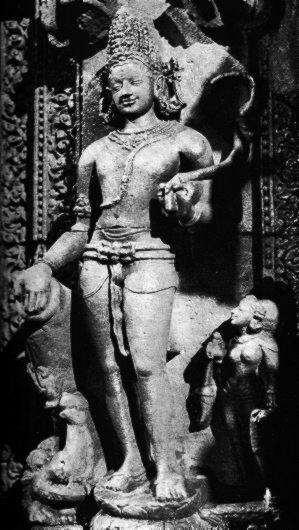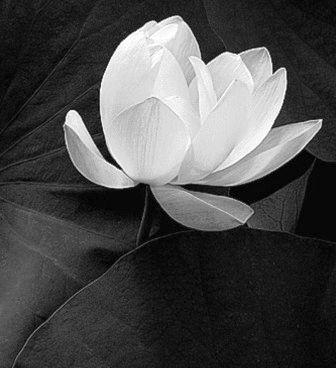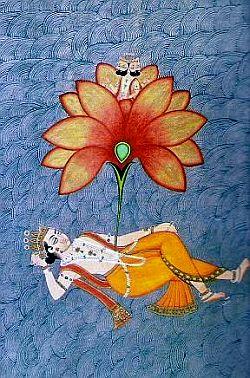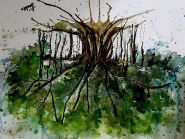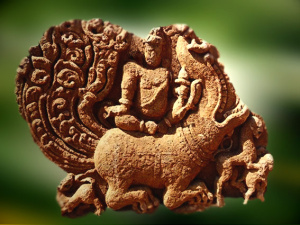
| VARUN, VED AND ZOROASTRIANISM Chapter - 4
Varun’s association with waters :
Varun’s associations with waters are explained at two levels. The two are extremes; so extreme that one is far removed from the other like the rarified deep space from the dark underground. The one is pure metaphysics and high symbolism, while the other is mundane and vulgar. The differences between the two levels cannot be bridged. There is no common ground for reconciliation. The two sets of associations cannot also be rationalized and bound into one. It is best that each is viewed separately, each in its own context–for whatever.
The philosophical explanations and suggestions on the nature of Varun’s association with waters have bred numerous debates, theories and speculations. Scholars have come up with varied interesting and intricate explanations which at times sound too abstract; hard to grasp. It is not easy to present them either. We shall briefly see a couple of such explanations and theories.
N. Creation- the process
Apah – Dark, deep and unfathomable waters :
47.1. The terms Salilam and Apah which denote waters in the Rig Ved are said to be highly significant. Dr. Usha Choudhuri (in her scholarly thesis Indra and Varun) explains these terms as implying more than just the water-element. In the most celebrated hymn of creation – Nasadiya Sutktha which occurs in the Tenth Book of Rig Ved, as also in the Vak Suktha (RV.10.8.125) and in the Hiranya-garbha Suktha (RV. 10.121 ) the terms Salila and Apah represent Great Waters or the primeval waters or the primeval matter of creation. They stand for the manifest as also for the un-manifest primeval matter: Prakrti or Vak or Aditi or Viraj.
47.2. Apah or Salilam is conceived as the threshold prior to which there was no distinction between existence and non-existence; between form and formlessness. Whatever that was there prior to it was neither sat nor a-sat; neither being nor non-being. That is; Apah or Salilam represents the crosses-over stage at which the unformed primordial universe transforms into existence. It could be regarded as the first stage of creation. Thus, Apah is Prakrti as in Samkhya; and it is the primary source of all possibilities of manifestation in the world.
47.3. Apah is twofold: as the undifferentiated, un-manifest and formless (a-vyakta or apraketa or a-murta); and as the manifest with forms (vyakta or praketa or murta). It is said; Apah and Salilam denote Prakrti or the creative power (Shakthi) of the Purusha the Absolute principle. It also suggests movement (gati) and action (karma). Thus, Apah or Salilam signifies the state of Becoming; while Purusha signifies the state of Being.
47.4. To explain it in another way; these dark, deep and unfathomable waters (gahanam ghabhiram – RV. 10.129.1) hold in their womb the un-manifest universe. And, it is from these dark waters the manifest world springs forth. Nasadiya Suktha mentions “the un-manifest conceals within itself the formless manifestation. The universe was then undifferentiated in the primeval waters” (RV agre ‘praketa? salila? sarvam a idam– RV.10.129.3). That is; these Great waters (mahat-salilam) represent the immense potential of Prakrti in its un-manifest (a-vyakta) state. It has that potential to give expression to infinite possibilities as forms (vyakta).
RV_10,129.01a nasad asin no sad asit tadanim nasid rajo no vyoma paro yat |
Varun symbolizes Prakrti :
48.1. The essential character of these primeval waters is Avarana – to cover or to encompass (var). Varun is the encompasser; he pervades (var) everything; he presides over the visible and the invisible worlds. Varun is the mythical symbol of primeval matter. And, he is the presiding deity of Apah and salilam. Varun the lord of these waters, the primeval matter, thus symbolizes Prakrti.
48.2. It is by the will or the desire of Varun, and through his wisdom-extraordinary (Maya) the forms of the visible world (Murtha) emerge from out of the formless (a-Murtha). Varun in this sense is the creator; the world is born out of his mind (manas); and thus, he symbolizes kaarana –Brahman, the Brahman with a desire to create.
48.3. Shri Ananda Coomaraswamy too (in his Yakshas) explains Varun as denoting Prakrti. He states that the term Samudra originally meant the sky; and the sky did not merely signify the physical sky but the all encompassing desire of the Purusha. Varun is that will of Purusha. Varun who is described as Rta-Samudra or Rta-sadana is indeed the Prakrti.
Aditi is Apah and Prakrti :
49.1. Aditi, the Mother – principle, Deva matri the mother of all gods and of all existence is described as the mighty mother,’ lofty like a mountain, swelling with sweet milk’, the celestial light (jyothihmati –RV .1.115.5), the queen or the guardian of Rta (rtavari), ever expanding and never decaying, gracious guide and great protector (YV. 21.5). She denotes freedom from bondage. She gives birth to manifest world. She is the Mother of all creation. Because the nourishing Mother Aditi is the source of all manifested reality – the past, the present and the future; of “all that has been and will be born” she is regarded as Prakrti the creative principle, the desire of the Supreme to create (YV.10.7).
49.2. As mentioned earlier, Apah or Maha-salilam the great waters denote primeval matter or the primal cause of creation from which the manifest is born. Thus, Apah, the waters too are mothers (apah asmin matarah) – ‘The waters are our mother (ambayah), womb of the universe’ (RV.1.23.10). Aditi the great mother (mahi mata) who gives give birth to the manifest world is thus equated with Apah, among other things.
49.3. As Apah, Aditi is the creative energy which is active and moving (gati). Since Apah suggested movement (gati), it is said, the life-giving(jiva-nadi) , flowing rivers and streams are deemed feminine (Prakrti) ; while the stagnant Samudra the ocean into which all beings go and from which all beings emerge acquired a masculine identity (Purusha).
49.4. Aditi (Apah and Prakrti) is the forerunner of the Mother –Goddesses of the later texts and lore who symbolize the power (shakthi) of Prakrti in all its aspects.
Vak is Apah and Prakrti :
50.1. In the Vak Suktha or Devi Suktha of Rig Ved (RV.10. 10.125), Apah is conceived as the birth place of Vak or Vac who is the creator, sustainer and destroyer. In an intense and highly charged superb piece of inspired poetry She declares “I sprang from waters there from I permeate the infinite expanse. It is I who blows like the wind creating all the worlds “.
Vak the primal energy the Great Goddess Mother is described in various ways : Vak is the eternal being; the first-born of the eternal waters. Vak is the Mother who gives form to the formless; gives birth to existence and lends identity to things by naming them. Vak is the faculty which gives expression to ideas. She is the mysterious presence that enables one to hear, see, grasp and express in words or otherwise the true nature of things. She is the navel of energy
50.2.
Vak who springs forth from waters, touches all the worlds with her
flowering body and gives birth to all existence is indeed the Prakrti.
Vac is also Apah and an attribute of Varun.
I move with Rudras and Vasus,
50.3. Eventually; Apah, Aditi, Vak and Varun all represent the same principle: Prakrti the creative principle.
O. Lotus and the inverted tree
Lotus symbolizes waters and life
51.1. The Lotus symbolizes waters; and earth is a leaf thereof. The lotus-leaf is called the back of the waters (Tai.sam.5.1.4.2). The earth lies spread on water just as the lotus-leaf does. The noted scholar Ananada K Coomaraswamy (in his Yakshas) too relates lotus to waters. He explains the concept of earth resting on waters in the context of the full-blown lotus flower that supports a divinity in the Indian iconography: ”where it seems to be implied that the figure is supported by a widely extended lotus flower rising out of the waters; and in the last analysis the deity is supported by the waters”.
51.2. He also mentions that lotus symbolizes life. The imagery of creation springing forth from the all-encompassing creator was initially related to Varun. That is because Varun in the early phases of Rig Ved was the Creator who brought forth all existence. But, since the virtues and powers of Varun merged into Vishnu, in the later mythologies lotus came to be depicted as rising from the navel of Narayana resting on celestial waters bearing Brahma the abjaja –born of water or born of lotuses.
51.3. In any case, that imagery pictures the principle that all life and existence is born out of the waters.
Inverted tree of life – Varun Urdhvamulo
’vasakha eso ’asvatthah sanatanah / tad eva sukram tad
brahma tad eva amrtam ucyate / tasmi lokah sritah , sarve tad u
naty eti kas cana
52.2. Tracing the myth of the world tree from Varun to Narayana, Ananada K Coomaraswamy refers to the remarkable resemblances in the ethical character of Varun and Vishnu. According to him, ’the cosmic-tree myths of various forms and their relation to the lotus symbol verily owe their origin to Varun. He says the concept of the cosmic functioning originally represented Varun. That concept did not undergo any change; but it only acquired new names and new symbols.
Thus, Varun is Kaarana Brahman by whose desire the manifest world materializes.
abudhne raja varuno vanasyordhvam stupam dadate putadaksah |
Varun of hallowed understanding, / Holds aloft a mass of life-giving radiance, which streams down; May these rays sink deep and set within us. (RV. 1.24.7- 8)
P. Some other explanations for Varun’s association with waters
Waters, Darkness and Varun – Prakrti
53.1. Varun’s association with darkness (tama) metaphorically called night (rathri), as also with waters (Apah) has given rise to number of other highly interesting philosophical speculations.
Nasadiya Suktha says, “In the beginning, darkness was hidden by darkness. All this was unmarked formless waters. ..”. That image of primordial waters was perhaps meant to convey the absence or the sense of absence of all sorts of distinctions in the pre-creation universe. And, similarly, darkness implied a state where day or night was not marked. Here, darkness and waters both seem to mean the same principle -– the all enveloping unformed state before the world of things (sat) arose out of its matrix.
“All this was produced from the dark waters (Taittiriya Aranyaka of the Krishna YajurVed – 1.23)”.
Àpo va idamasanth-salilam-eva | sa prajapatirekaÏ puÍkaraparÉe samabhavat |
53.2 As said earlier, Varun symbolizes un-manifest (a-vyakta or a-praketa or a-sat) as well as manifest (vyakta or praketa or sat) state of existence.
53.3. It is also explained; Rathri the darkness is Varun (Ait Brh. 4.10); Rathri the starlit night belongs to Varun (Tai .B 1.7.10); and, Varun is waters (Apah) as it pervades (var) everything. Thus, both – darkness and waters- become associated with Varun.
53.4. For these reasons, it is said that Varun, Rathri and Apah all represent Prakrti.
54.1. Water is glorified as the nectar or honey (madhu) and the joy of life; and it is also the elixir of immortality. Water is the symbol of creation, life (jeevanam), strength and energy. Water is thus the nourishing mother of all life and existence. Water is as essential to life as is the vital-air (prana) – aphomaya pranah. Water is the source of all existence; it sustains, heals and purifies life.
Water is regarded as an extraordinary and omnipresent element in Rig Ved. It is the support of all lives; and, the savior of everything living or dead on earth. The world moves along with the pure and simple movement of the water. It washes away the impurities and also cleans the inconsistencies of human behavior. Water is a great medicine. It does away with the diseases and is the benefactor of health, strength, long-life, wealth and immortality.
Yasam Raja Varuno Yati Madhyai Satyanrite Avapashyanje yajnanam| Madhushchutah Shuchaye yah pavakah ta Apao devirih mamvantu|| VII.49.3
The water dwells where gods dwell. The water in which the king of waters Varun dwells, the water in which Soma lives, in whom all gods drink exhilarating strength, the waters in which the leader of all–Agni enters, who are full of divine values, help me in the world. He, whose destination is the ocean, who purifies the world, is always flowing, such water lives in the middle of the Universe. Indra, who possesses ‘Vajra‘ and rains the desires, broke opened a path for these divine waters. May these waters help me and be received by me.
Samudrajyestha Salilasya Madhyapunana Yantyanivishmanah | Indrah ya vajri vrishabho rarad TaApoa devirih mamvantu ||
54.2. Shatapatha Brahmana (SB.2.3.2.10) makes an interesting remark: when Agni burns brightly, he then indeed becomes Varun the purifier (paavaka). There is therefore a belief that the purifying waters cleanses sins, betrayals (abhidudroha) and falsehood (anrtam duritam) – (RV. 1.23.22). The one that has been purified shouts in ecstasy: “I have become one with the essence of the celestial energy, rasena”. Water represents that faith (shraddha) in life.
54.3. Though the waters are celebrated by various metaphors, the physical aspect of water is not lost sight. The Chandogya Upanishad describes Waters as the source of all plants and herbs Oshadhis; the giver of good health and destroyer of diseases. It is the source of joy of healthy living. The mountains, the earth, the atmosphere and the heavenly bodies too derive their form through water (Chandogya Upanishad – 7.10.10) .It is said; even the gods are waters – as they are the foundation and source of the universe and everything is contained in them.(SB. 10.5).
And again , it is said; the water which is created in the universe; which is pure and full of light; which is full of divine characteristics; the water which flows in the form of river; the water which comes from the digging of the wells, canals; the water which is self-created in the form of waterfalls; and, that which enters into the ocean, help me in this world and thereafter.
Ya Apaodivya Ut Va Sravanti Khanitrima ut va yah swayamjah | Samudrartha Yah Shuchayah pavakasta Apao Devirih Mamvantu || VII.49.2
Varun too is water.
“Verily all this is water. All the created beings are water. The vital breaths (prana) in the body are water. Quadrupeds are water. Herbs and crops are water. Madhu the nectar is water. Samrat[perpetually shining] is water. Virat [shining] is water. Svarat [self-luminous] is water. The metres (pankti) are water. The Devas are water. Vedic formulas are water. Truth is water. All deities are water. The three worlds denoted by Bhuh, Bhuvah and Suvah are water. The source of all these is the Supreme denoted by the syllable ‘Om”. (Mahanarayana Upanishad- 29.1)
54.4. Since Varun is waters, Apah, all its virtues and attributes are imbibed in him.
Apah and Sathya :
55.1. Varun who is the lord of waters (Apah) is also related with the order in world and to the laws in nature (Rta), and the Truth (satya). It is said ‘waters are the Truth…where waters flow there the Truth resides …. It is the waters indeed that were made first of this universe, hence when waters flow then everything whatever that exists in the universe is brought forth’ (Sathapatha Brahmana). Water is thus the universal mother –principle in the Rig Ved. Waters are Prakrti.
55.2. Thus Waters, Truth and Varun symbolize Prakrti.
56.1. Varun the son of Aditi resides among primal waters. He is described also as Apam-shishuh ‘the child of waters, in the best of the mothers – Aditi’
56.2. It is also said; since Varun dwells in waters he is Apam Napat, “Son of the Waters’ (RV.1.2.35). Apam Napat is also referred to as the embryo (garbha) of the waters (RV.7.9.3). It is said; the sun when he sinks into waters – to quench his thirst- becomes Varun the fire in the waters (Apam Napat).
[But, Varun soon lost this ancient title; and it came to be applied more and more to Agni born of a spark from water and to other solar deities such as Savitr.]
Varun and the moon :
56.7. Another explanation offered to reason Varun’s association with waters seems to me rather flat. It is said; as the god of the night sky Varun is related with the celestial bodies that shine in the night sky: the stars and the moon. And, the moon who is related to Varun influences the tides of the ocean and movement of terrestrial waters. Therefore, Varun is connected with water and the aquatic realm.
Q. Varun the water-god
This is the other-side of Varun’s association with waters.
57.1. The status and the attributes of Varun changed drastically, for worse, in the Puranas and the epics. Varun lost the authority of kingship and the moral superiority that he once enjoyed in the Rig Ved and in the other Samhitas. He is relegated as the regent of the west and demigod of waters; and practically nothing more. It was as if the once mighty Varun had been pensioned off and assigned a minor rank.
57.2. The waters that Varun is now made in – charge are just waters on earth – plain and simple; they have no symbolic interpretations or philosophical connotations. Varun is Salilesvara the king of terrestrial waters like lakes, rivers and oceans. Samudra the vast urukshaya (1.2.9) is his abode. There he resides in his magnificent underwater palace (saagaro Varunlayah) a den of sensual delights, surrounded by nymphs, snakes and all types of aquatic creatures.
57.3. His underworld too has gone radical reimaging; it is no longer the sedate and welcoming abode of the Pitris, but it is now tainted by the fearful pollution of death. Varun has now turned sensuous and cruel; and developed dark and sinister associations. He has also lost his good looks. Varun in this phase does not command much respect. He is often chastened by other gods. Stories are told of his misadventures and humiliations. It appears he abducted and seduced Urvasi a nymph of Indra’s court and fathered a son from her. On another occasion, it is said, Varun kidnapped Bhadra, daughter of Soma and wife of Uthahya.
57.4. Varun who once was: the nearest approximation to the Supreme Being, the sovereign of all earth and heavens, the creator and sustainer of life in all three regions, the lord who presided over order in the physical and moral realms, the judge who dispensed justice and handed down punishments, is now turned into the regent of the west and god of seas; and eventually a demigod of local water- bodies; a god of not much consequence… a god of small things….what a fall….!!
Epithets :
58.1. His association with waters however earned Varun number of descriptive epithets, such as: Prachetas, apam-pathi , ambu-raja, jaleshwara, jalaadhipa, vaaripa, udakapathi, salileshwara, Jala-pati, Kesa (lord of water) ; Sindhu pathi , Nadi-pathi (lord of the seas or rivers); sarit-pathi (lord of all that flows); VIloma, Vari-loma (watery hair) ; Yudh pathi ( king of aquatic animals) ; Uddama (the surrounder) ; bharti (the nourisher); and, Pashi , Pasha bhrit, (bearer of the noose).
References and Sources :
1. Indra and Varuna in Indian Mythology by Dr. UshChoudhuri; Nag Publishers, Delhi, 1981
2. The Indian Theogony by Dr.Sukumari Bhattarcharji, Cambridge University Press, 1970
3. Asura in early Vedic religion by WE Hale; Motilal Banarsidass; Delhi, 1986
4. Goddesses in ancient India by PK Agrawala; Abhinav Publications, New Delhi,1984
5. The Hymns of Atharvan Zarathustra by JM Chatterji; the Parsi Zoroastrian Association, Calcutta, 1967
avesta.org
6. Outlines of Indian Philosophy –Prof M Hiriyanna; Motilal Banarsidass, Delhi, 2005
7.Original Sanskrit texts on the 0rigin and history of the people of India, their region and institution By J. Muir;Trubner & co., London, 1870.
8. A classical dictionary of Hindu mythology and religion, geography, history, and literature byJohn Dowson; Turner & co, Ludgate hill. 1879.
9. Vaidika Sahitya Charitre by Dr. NS Anantharangachar; DVK Murthy, Mysore, 1968
10. Sri Brahmiya Chitra Karma sastram by Dr. G. Gnanananda
11. Zarathustra Chapters 1-6 by Ardeshir Mehta; February 1999
Websites :
indiayogi.com
bookrags.com
bookrags.com
hinduweb.org |
